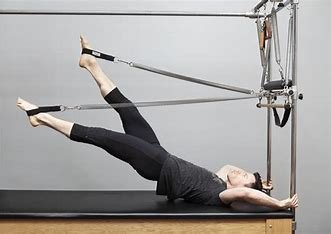Pilates is a low-impact exercise method designed to improve flexibility, strength, and body awareness, with a particular emphasis on strengthening the core muscles. The core refers to the muscles in the abdomen, lower back, hips, and pelvis, and is often considered the foundation of overall body strength. Pilates was developed by Joseph Pilates in the early 20th century and focuses on controlled movements, precision, and breathing to enhance physical fitness.

1. Targeting the Core Muscles:
- Core activation: Pilates exercises focus on engaging the core muscles throughout each movement. The goal is to strengthen the deeper layers of the abdominal muscles (such as the transverse abdominis), along with the muscles of the lower back, hips, and pelvic floor.
- Posture and alignment: A key aspect of Pilates is teaching proper posture and alignment, which relies on a strong core. Many exercises focus on stabilizing the torso while the limbs move, helping to improve overall body mechanics.
- Mind-muscle connection: Pilates encourages you to consciously engage and control the core muscles, increasing awareness and control over these muscles. This helps with building strength, stability, and coordination.
2. Pilates Exercises for Core Strength:
- The Hundred: A classic Pilates exercise that strengthens the abdominal muscles and improves endurance. It involves raising the legs to a tabletop position, engaging the core, and pumping the arms while breathing in a controlled pattern.
- Roll-up: This exercise targets the abdominals, especially the upper and lower abs, as you articulate your spine one vertebra at a time from a lying position to a seated position and back down.
- Plank variations: Planks are a staple in Pilates for building core strength. Holding a plank position while keeping the body in a straight line requires active engagement of the core to prevent the hips from sagging or lifting too high.
- Leg Circles: This exercise strengthens the lower abdominal muscles while working on pelvic stability. The movement involves lifting one leg and making small circles in the air while keeping the torso stable.
- Saw: This involves twisting the spine while reaching the arms toward the toes, focusing on rotational movement, and working on both abdominal and oblique (side) strength.
3. Improved Posture and Stability:
A strong core is fundamental for maintaining good posture, as it provides stability to the spine and pelvis. In Pilates, exercises are designed to reinforce proper alignment by encouraging core engagement during everyday movements. This improves posture, reduces the risk of back pain, and enhances functional movement.
4. Breath and Core Activation:
In Pilates, breath plays a vital role in engaging the core. Inhalation and exhalation patterns are synchronized with movements, helping to deepen core activation. For example, the core muscles are often engaged during the exhale, which assists in maintaining control during exercises and stabilizing the body.
5. Pilates vs. Other Core Workouts:
While many fitness programs focus on strengthening the abdominals through crunches and sit-ups, Pilates goes beyond just working the superficial “six-pack” muscles. It strengthens the entire core—including the deep muscles that stabilize the spine and support overall posture. This makes Pilates particularly effective in improving functional strength and helping with issues like back pain or poor posture.
6. Core Strength and Overall Benefits:
A strong core in Pilates doesn’t just mean toned abs. It translates to better balance, coordination, and overall strength, making it easier to perform everyday activities, such as lifting objects, bending, or walking. It also enhances athletic performance by providing a stable base for the rest of the body to move efficiently.
Conclusion:
Pilates is highly effective for improving core strength by focusing on controlled, mindful movements that target the deep abdominal muscles and other stabilizing muscles around the spine and pelvis. A stronger core leads to improved posture, better movement patterns, reduced risk of injury, and greater overall strength and stability in daily life.
